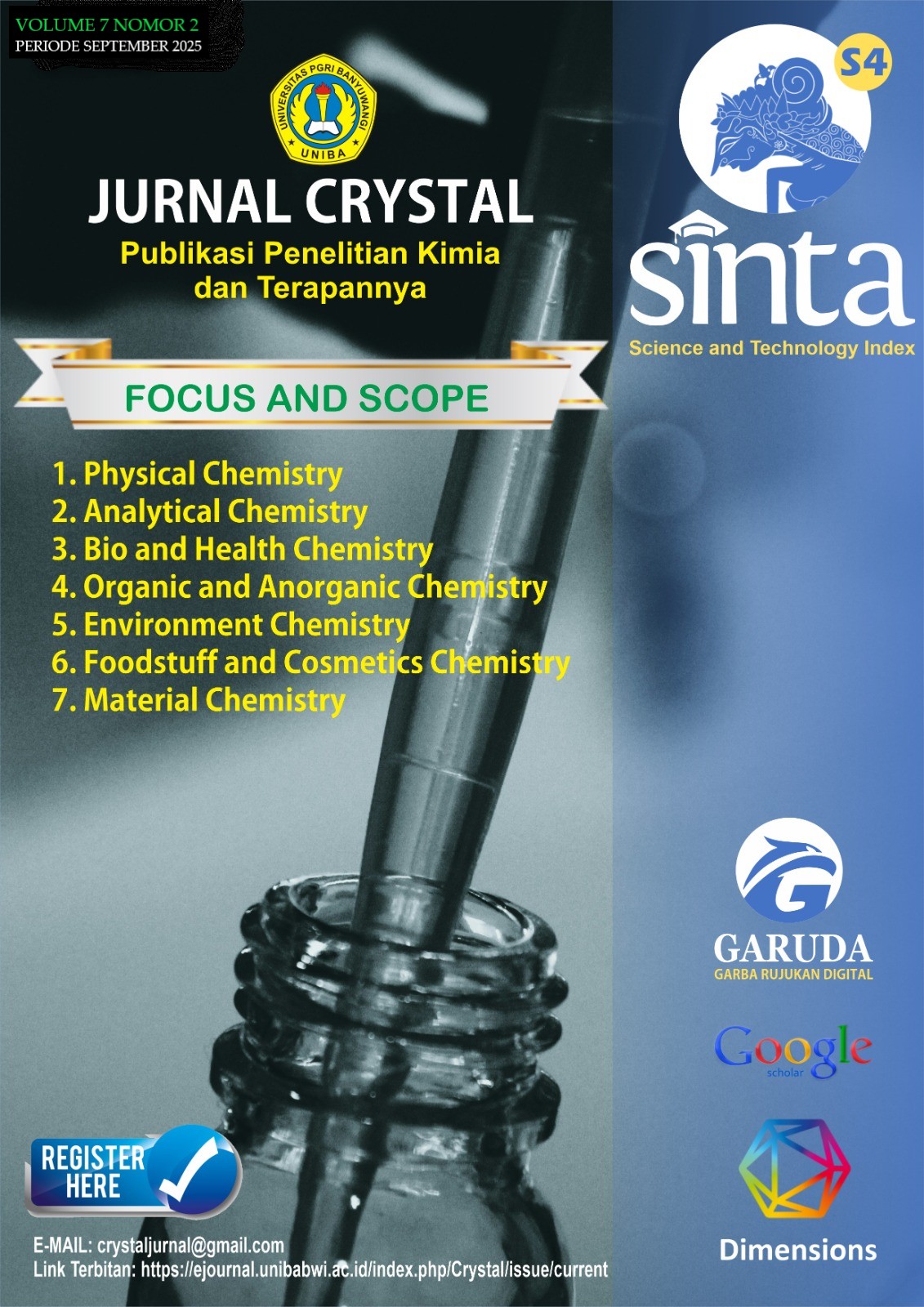ADHESIVE BEHAVIOR OF POLYCAPROLACTONE/HYDROXYAPATITE COATINGS ON 316L STAINLESS STEEL: A DESIGN OF EXPERIMENTS APPROACH
DOI:
https://doi.org/10.36526/jc.v7i2.6212Keywords:
PCL/HA coating,, Adhesive strength, 316L Stainless Steel,, Factorial Design, OptimizationAbstract
Enhancing the adhesive strength of bioactive coatings is crucial for improving the mechanical stability of metallic implants. This study investigates the effects of three processing parameters—sonication temperature (X₁), PCL/HA ratio (X₂), and drying time (X₃)—on the adhesive strength of poly(ε-caprolactone)/hydroxyapatite (PCL/HA) composite coatings applied to 316L stainless steel substrates. A full factorial 23 experimental design was employed, and the results were analyzed using analysis of variance (ANOVA) and regression modeling. The adhesive strength response ranged from 19.62 MPa to 63.27 MPa. Among the factors studied, the PCL/HA ratio had the most significant positive effect, while drying time showed a minor influence. Interaction plots and response surface analyses revealed a synergistic effect between sonication temperature and PCL/HA ratio, contributing to improved bonding at the coating-substrate interface. The optimization results yielded a predicted maximum adhesive strength of 25.76 MPa at a desirability score of 0.03, highlighting the complexity of parameter interactions. These findings underscore the importance of processing conditions in tailoring coating performance for biomedical applications.
References
Aroussi, D., Aour, B., & Bouaziz, A. S. (2019). A Comparative Study of 316L Stainless Steel and a Titanium Alloy in an Aggressive Biological Medium. Engineering, Technology & Applied Science Research, 9(6).
Drevet, R., Fauré, J., & Benhayoune, H. (2023). Bioactive calcium phosphate coatings for bone implant applications: a review. Coatings, 13(6), 1091.
Fadli, A., Yenti, S. R., Huda, F., Prabowo, A., & Marbun, U. N. (2021). Empirical model to predict the hydroxyapatite thickness on the surface of 316l stainless steel by the dip coating method. Ceramics–Silikáty, 65(4), 386-394.
Fadli, A., Prabowo, A., Utama, Panca setia, Aziz, Y., & Heltina, D. (2023). SIGNIFICANCE OF THE PCL CONCENTRATION ON THE ELECTROCHEMICAL AND MECHANICAL PERFORMANCE OF A PCL/HA COATING ON SS 316L. Ceramics–Silikáty, 67(4), 551-561.
Fern, H. W., & Salimi, M. N. (2021, May). Hydroxyapatite nanoparticles produced by direct precipitation method: Optimization and characterization studies. In AIP Conference Proceedings (Vol. 2339, No. 1, p. 020215). AIP Publishing LLC.
Gunatillake, P. A., & Adhikari, R. (2003). Biodegradable synthetic polymers for tissue engineering. European Cells and Materials, 5, 1–16.
Haleem, A. H., Radhi, N. S., Jaber, N. T., & Al-Khafaji, Z. (2024). Preparation and Exploration of Nano-Multi-Layers on 316l Stainless Steel for Surgical Tools. Jordan Journal of Mechanical & Industrial Engineering, 18(2).
Hetemi, D., & Pinson, J. (2019). Functionalization of polymers by hydrolysis, aminolysis, reduction, oxidation, and some related reactions. Surface Modification of Polymers: Methods and Applications, 211-240.
Homa, K., Zakrzewski, W., Dobrzyński, W., Piszko, P. J., Piszko, A., Matys, J., ... & Dobrzyński, M. (2024). Surface functionalization of titanium-based implants with a nanohydroxyapatite layer and its impact on osteoblasts: a systematic review. Journal of Functional Biomaterials, 15(2), 45.
Huynh, V., Ngo, N., & Golden, T. (2019). Surface activation and pretreatments for biocompatible metals and alloys used in biomedical applications. International Journal of Biomaterials, 2019, 1-21. https://doi.org/10.1155/2019/3806504
Ielo, I., Calabrese, G., Luca, G., & Conoci, S. (2022). Recent advances in hydroxyapatite-based biocomposites for bone tissue regeneration in orthopedics. International Journal of Molecular Sciences, 23(17), 9721. https://doi.org/10.3390/ijms23179721
Liang, H. Y., Lee, W. K., Hsu, J. T., Shih, J. Y., Ma, T. L., Vo, T. T. T., ... & Lee, I. T. (2024). Polycaprolactone in bone tissue engineering: a comprehensive review of innovations in scaffold fabrication and surface modifications. Journal of functional biomaterials, 15(9), 243.
Luo, J., Jia, X., Gu, R., Peng, Z., Huang, Y., Sun, J., … & Yan, M. (2018). 316l stainless steel manufactured by selective laser melting and its biocompatibility with or without hydroxyapatite coating. Metals, 8(7), 548. https://doi.org/10.3390/met8070548
Ma, X., Zhou, X., Ding, J., Huang, B., Wang, P., Zhao, Y., ... & Xu, W. (2022). Hydrogels for underwater adhesion: adhesion mechanism, design strategies and applications. Journal of Materials Chemistry A, 10(22), 11823-11853.
Monia, T., & Ridha, B. C. (2024). Polymer-ceramic composites for bone challenging applications: Materials and manufacturing processes. Journal of Thermoplastic Composite Materials, 37(4), 1540-1557.
Montgomery, D. C. (2017). Design and Analysis of Experiments (9th ed.). John Wiley & Sons
Ramesh, N., Moratti, S. C., & Dias, G. J. (2018). Hydroxyapatite–polymer biocomposites for bone regeneration: A review of current trends. Journal of Biomedical Materials Research Part B: Applied Biomaterials, 106(5), 2046-2057.
Saputra, A., Syafitri, U., Sudiro, T., Timuda, G., & Sari, Y. (2021). Gas pressure and coating distance for nanohydroxyapatite deposition on stainless steel 316l using flame spray technique. Journal of Metals Materials and Minerals, 31(1).
SAS Institute Inc. (2018). JMP Pro 14 Statistical Discovery from SAS. SAS Institute Inc.
Shamsi, M., Sedighi, M., & Bagheri, A. (2024). Surface modification of biodegradable Mg/HA composite by electrospinning of PCL/HA fibers coating: Mechanical properties, corrosion, and biocompatibility. Transactions of Nonferrous Metals Society of China, 34(5), 1470-1486.
Singh, J., Singh, J., Kumar, S., & Gill, H. (2023). Short review on hydroxyapatite powder coating for ss 316l. Journal of Electrochemical Science and Engineering, 13(1), 25-39.
Soriente, A., Fasolino, I., Sánchez, A., Prokhorov, E., Buonocore, G., Luna‐Bárcenas, G., … & Raucci, M. (2021). Chitosan/hydroxyapatite nanocomposite scaffolds to modulate osteogenic and inflammatory response. Journal of Biomedical Materials Research Part A, 110(2), 266-272.
Sowmya, B., Hemavathi, A. B., & Panda, P. K. (2021). Poly (ε-caprolactone)-based electrospun nano-featured substrate for tissue engineering applications: A review. Progress in biomaterials, 10(2), 91-117.
Taghizadeh, F., Heidari, M., Mostafavi, S., Mortazavi, S. M., & Haeri, A. (2024). A review of preparation methods and biomedical applications of poly (ε-caprolactone)-based novel formulations. Journal of Materials Science, 59(24), 10587-10622.
Tirumkudulu, M. S., & Punati, V. S. (2022). Solventborne polymer coatings: Drying, film formation, stress evolution, and failure. Langmuir, 38(8), 2409-2414.
Ulery, B. D., Nair, L. S., & Laurencin, C. T. (2011). Biomedical applications of biodegradable polymers. Journal of Polymer Science Part B: Polymer Physics, 49(12), 832–862.
Vasudev, H. and Prakash, C. (2023). Surface engineering and performance of biomaterials. Journal of Electrochemical Science and Engineering, 13(1), 1-3. https://doi.org/10.5599/jese.1698.
Downloads
Published
How to Cite
Issue
Section
License
Copyright (c) 2025 Agung Prabowo, Ahmad Fadli, Heni Sugesti, Muh Irwan, Syarifuddin Oko, Gading Bagus Mahardika, Marlinda

This work is licensed under a Creative Commons Attribution 4.0 International License.















